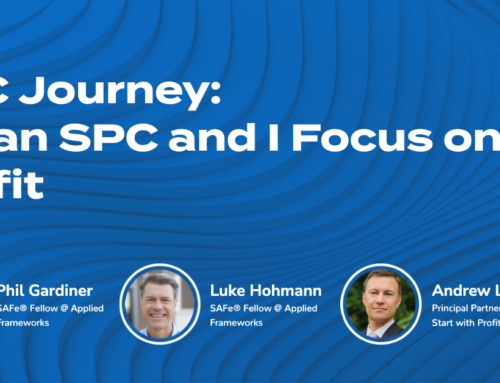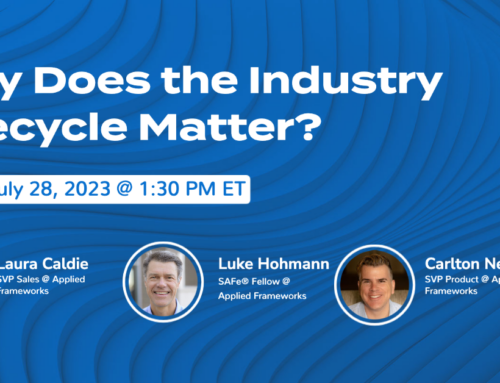Five Whys is an iterative question-asking technique used for problem solving. The goal of the technique is to find the root cause of a problem by peeling away the layers that may hide the problem’s true origin.
Originally developed by Sakichi Toyoda, the founder of Toyota, the Five Whys technique was originally developed to solve problems in a manufacturing environment:
PROBLEM: The robot has stopped.
-
- Why did the robot stop?
- The circuit has overloaded, causing a fuse to blow.
- Why has the circuit overloaded?
- There was insufficient lubrication on the bearings, so they locked up.
- Why was there insufficient lubrication on the bearings?
- The oil pump on the robot is not circulating sufficient oil.
- Why is the pump not circulating sufficient oil?
- The pump intake is clogged with metal shavings.
- Why is the intake clogged with metal shavings?
- Because there is no filter on the pump.
- Why did the robot stop?
In the last decade, the Five Whys has become standard Agile practice. Scaled Agile combines it with the Ishikawa Diagram (i.e., Fishbone) as an integral part of their Inspect and Adapt event.

Sample Ishikawa Diagram
The Challenge with Five Whys in Agile
In principle, the Five Whys technique sounds simple enough. In practice, I’ve seen it lead it to a cycle of buck passing and recrimination. Take for example:
PROBLEM: Service outage.
-
- Why did our service go down?
- Because the server lost power.
- Why did the server lose power?
- Bob hasn’t replaced the damn UPS yet, I’ve been on him for weeks.
- Bob, why haven’t you replaced the UPS?
- Don’t look at me, I’ve been trying to get the UPS replaced for weeks, finance won’t approve the PO.
- “Finance, why haven’t you approved the PO?”
- Budgets are frozen and Bob didn’t get an exception from the CTO, our hands are tied.
- “Bob, why didn’t you…”
- Why did our service go down?
You can see how easy it is for Five Whys to go off the rails…
Improvement: Try the Five Whats Instead
How do you overcome the momentum of personal agendas, natural defensiveness, and the tragic corporate blame game cycle? Try a more solution-oriented Five Whats technique:
PROBLEM: Service outage.
-
- What caused the service to go down?
- We lost power to the core servers and the UPS failed to kick in.
- What happened to our UPS?
- It can’t handle the load we have so it didn’t engage to prevent brown outs or surges that might damage the systems.
- What are we doing about it?
- Well we’re trying to get a new one, only budgets are frozen right now.
- What else could we do?
- We could try putting just half the servers on the UPS. If we lost power we wouldn’t be able to handle a full login load, but we’d be partially up at least.
- What do we need to start doing that?
- Give us the okay and we’ll have it done tonight.
- What caused the service to go down?
Asking “What” creates an environment without blame and fosters collaborative solutions. If you ask “What is the speed of light?” you get a very specific answer. If you ask “Why do people fight?” you could fill a Google datacenter with the results and not get an answer.
Powerful Questions Rely on What, not Why
Powerful Questions is a professional coaching technique designed to help the coached individual find answers they already know, only might not be looking in the right place. The coach doesn’t point to an answer – they just ask the right questions. For example:
- What is important about that?
- What is stopping you?
- What is the lesson from that?
You won’t find a why in Powerful Questions. The reason:
“Why” questions rest on the belief that to succeed, one should understand how one has failed. In other words, to learn how to swim, one must carefully analyze how one has almost drowned. In effect, why questions only let clients meander within their same-old limited past frame of reference. A good coaching process needs to gently lead the client out of their box (adapted from www.metasysteme-coaching.eu).
The question “why” carries a lot more emotional content than it’s cousin “what.” When you ask someone “Why didn’t you take out the trash,” you are essentially putting them on the defensive and laying blame. Even saying “why is the trash still here?” creates an adversarial space.
A Day without Why
If you want to see the benefits of using What over Why, try going a day without using the word “Why” in any part of your conversation. Instead, replace it with “What” or “How.” What happens when you do this? How does it make you — and others — feel?






